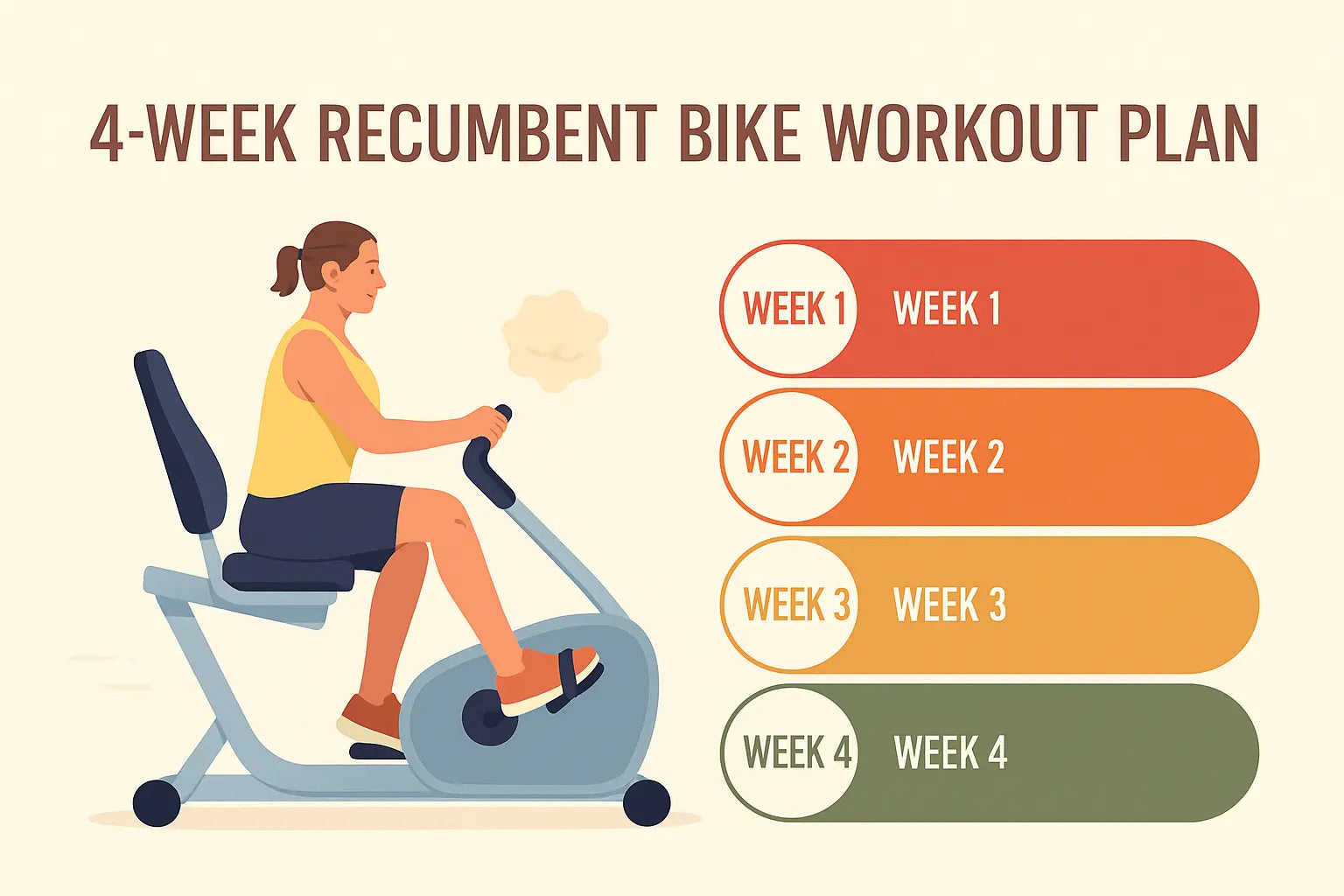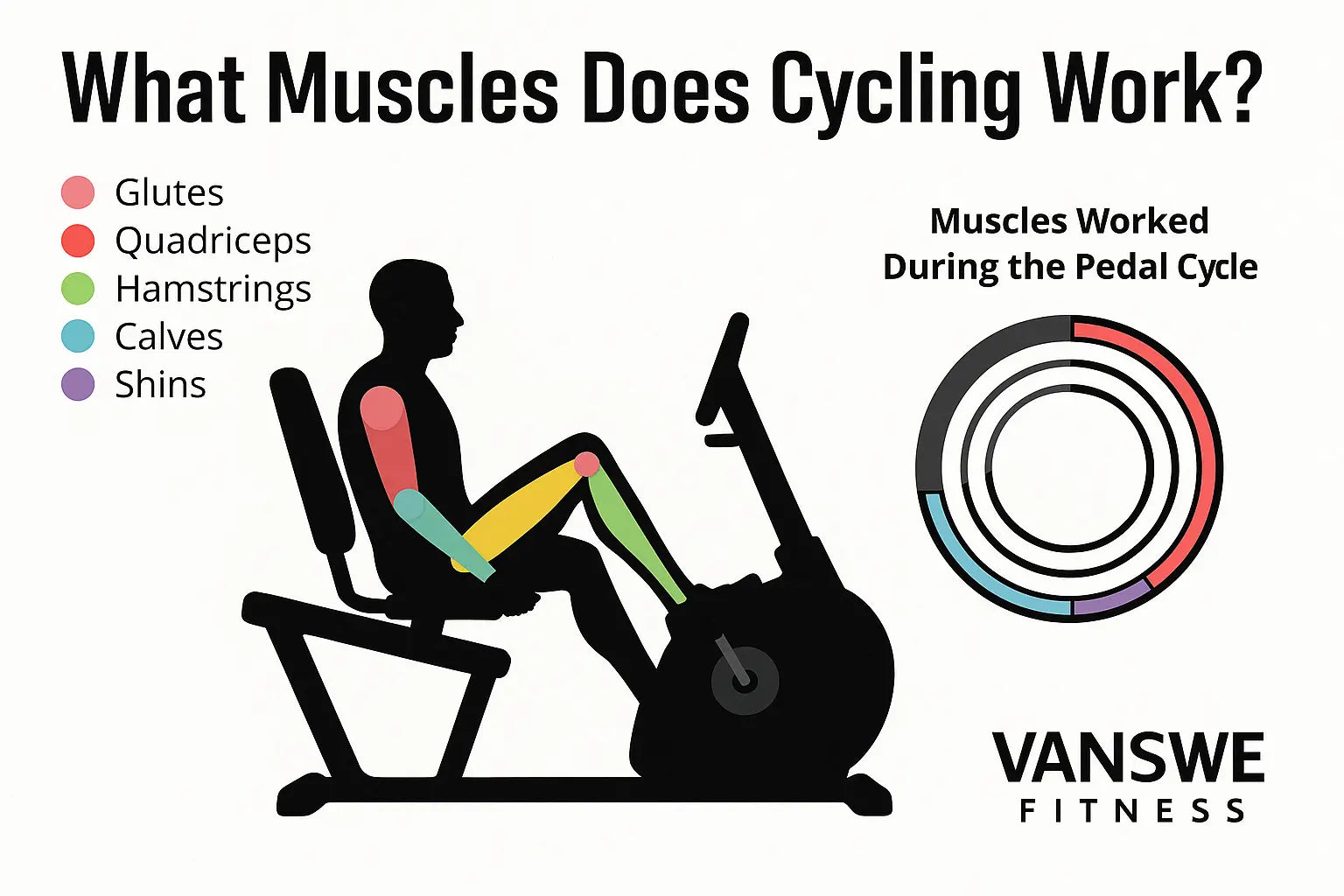Is a Recumbent Bike Good for Cardio?


Yes, a recumbent bike is good for cardio. It effectively raises your heart rate, boosts blood circulation, and strengthens your heart and lungs—all while placing minimal stress on your joints. Thanks to its reclined design and back support, it's especially ideal for beginners, older adults, and people with mobility or back issues seeking a safe and comfortable aerobic workout.
Source: Scandinavian Journal of Medicine & Science in Sports systematic review by Oja et al. (2011), "Health Benefits of Cycling"[1]
What Is Cardiovascular Exercise?
Cardiovascular exercise—also known as cardio—is any activity that raises your heart rate and strengthens your heart and lungs. It typically involves rhythmic, continuous movement using large muscle groups. Common examples include walking, running, swimming, and cycling. The main benefits of cardio are improved endurance, better circulation, and increased calorie burning.
Source: ACSM Position Stand (Garber et al., 2011), published in Medicine & Science in Sports & Exercise, outlining exercise guidelines for healthy adults [2]
How Does a Recumbent Bike Improve Cardiovascular Health?
A recumbent bike improves cardiovascular health by raising your heart rate, increasing blood flow, and strengthening the heart and lungs. It provides a consistent, rhythmic motion that engages the lower body muscles, especially the quadriceps, hamstrings, and calves. As you pedal, your heart rate increases, promoting blood circulation and oxygen delivery throughout the body. When used at the right intensity—such as within Zone 2 or Zone 3 heart rate ranges—a recumbent bike can deliver the same aerobic benefits as more traditional cardio machines like upright bikes or treadmills.
The ergonomic position of a recumbent bike allows users to exercise longer without discomfort, which is beneficial for maintaining a steady-state cardio workout. For individuals who struggle with joint pain or fatigue during standing exercises, the recumbent design offers a viable alternative for achieving cardiovascular fitness.
Source: Frontiers in Sports and Active Living study by Prieto-González & Yagin (2024), "Energy Expenditure, oxygen consumption, and heart rate on Seven Indoor Cardio Machines" [3]
Benefits of Using a Recumbent Bike for Cardio
Recumbent bikes offer several unique advantages compared to upright bikes or treadmills, especially for those seeking low-impact cardio. The table below highlights key differences in joint impact, comfort, calorie burn, and accessibility to help you choose the best option for your fitness needs.
| Feature | Recumbent Bike | Upright Bike / Treadmill |
|---|---|---|
| Joint Impact | Low | Medium to High |
| Comfort Level | High (reclined seat, backrest) | Moderate |
| Full-body Engagement | Limited (unless dual-action) | Higher (especially treadmill) |
| Calorie Burn Potential | Moderate | High |
| Accessibility | Excellent | May be harder for some users |
Source: International Journal of Sports Physical Therapy study by Bouillon et al. (2016), comparing muscle activity across upright bike, recumbent bike, treadmill, and other [4]
Related Article: Benefits of Riding a Recumbent Bike | Choose One Suitable Recumbent Bike
Limitations Compared to Other Cardio Machines
Despite their benefits, recumbent bikes have some limitations compared to other cardio machines like treadmills or upright bikes. These include:
- Lower intensity ceiling: Without resistance adjustments or intervals, they may offer less challenge than upright bikes or treadmills.
- Less full-body engagement: Arm movement is limited unless using a dual-action model.
- Slightly lower calorie burn: Due to seated position and less muscle recruitment.
Related Article: Recumbent Bike Comparison Hub: Which One Should You Choose?
Tips for Getting the Most Out of Your Cardio Workout on a Recumbent Bike
To maximize your cardio workout on a recumbent bike, follow these simple but effective tips:
- Use heart rate monitoring to stay in your target training zone (e.g., 60–70% max heart rate for Zone 2 training).
- Vary resistance levels to challenge your heart and muscles.
- Try interval training by alternating between low and high resistance.
- Maintain proper posture to ensure muscle engagement and prevent discomfort.
- Ride regularly, aiming for at least 150 minutes of moderate cardio per week, as recommended by health authorities.
Who Should Use a Recumbent Bike for Cardio?
Recumbent bikes are ideal for people who need low-impact, accessible cardio. They’re especially beneficial for:
- Beginners starting a cardio routine
- Seniors seeking a joint-friendly exercise
- Individuals with arthritis, back pain, or balance issues
- Patients undergoing rehabilitation
- Anyone looking for a comfortable yet effective aerobic workout
Related Article: Best Recumbent Bike with Arm Exerciser 2025
FAQs
Can you lose weight with a recumbent bike?
Yes, you can lose weight with a recumbent bike by combining regular cardio sessions with a healthy diet. Riding at a moderate intensity for at least 150 minutes per week helps burn calories and reduce body fat, especially when paired with calorie control and consistency.
How long should I workout on a recumbent bike?
For general fitness and heart health, aim for at least 30 minutes per session, 5 days a week. If your goal is weight loss, 45–60 minutes of moderate-intensity recumbent biking can be more effective, depending on your fitness level and calorie intake.
Related Tool: Recumbent Bike Calories Burned Calculator
Is a recumbent bike better than a treadmill for cardio?
It depends on your fitness goals and physical condition. A recumbent bike is better for low-impact cardio, making it ideal for people with joint pain or limited mobility. A treadmill typically burns more calories and offers weight-bearing benefits, but may cause more strain on the knees and back.
Conclusion: Is It Good for Cardio?
Yes, a recumbent bike is a highly effective tool for cardiovascular exercise. It offers many of the same benefits as more traditional cardio machines while minimizing joint strain and maximizing comfort. Whether you're just starting your fitness journey or looking for a sustainable way to improve heart health, a recumbent bike is a smart and accessible choice for cardio training.
Reference
- Oja, P., Titze, S., Bauman, A., de Geus, B., Krenn, P., Reger-Nash, B., & Kohlberger, T. (2011). Health benefits of cycling: A systematic review. Scandinavian Journal of Medicine & Science in Sports, 21(4), 496–509.
- Garber, C. E., Blissmer, B., Deschenes, M. R., Franklin, B. A., Lamonte, M. J., Lee, I.-M., Nieman, D. C., & Swain, D. P. (2011). American College of Sports Medicine position stand: Quantity and quality of exercise for developing and maintaining cardiorespiratory, musculoskeletal, and neuromotor fitness in apparently healthy adults: Guidance for prescribing exercise. Medicine & Science in Sports & Exercise, 43(7), 1334–1359.
- Prieto-González, P., & Yagin, F. H. (2024). Energy expenditure, oxygen consumption, and heart rate while exercising on seven different indoor cardio machines at maximum and self-selected submaximal intensity. Frontiers in Sports and Active Living, 6, Article 1313886.
- Bouillon, L., Baker, R., Gibson, C., Kearney, A., & Busemeyer, T. (2016). Comparison of trunk and lower extremity muscle activity among four stationary equipment devices: Upright bike, recumbent bike, treadmill, and ElliptiGO. International Journal of Sports Physical Therapy, 11(2), 190–200. PMID: 27104052
Latest Articles





